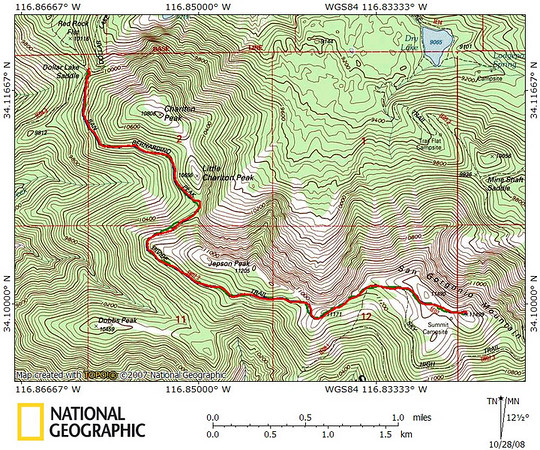Here is another simple test. The map below shows a hike from Dollar Lake Saddle to the summit of Mt. San Gorgonio. There are three traces. One (green, 3.52 miles) is a trace of the trail on the map, drawn as accurately as I could make it. The others are tracks from the aforementioned GPS watch going up (red, 3.53 miles) and down (blue, 3.56 miles). The traces agree remarkably well and the distances agree to about 1%. You can talk all you want about random errors, arm motion, etc. This is an empirical example of what those errors actually mean. For hiking purposes, a portable GPS receiver performs wonderfully well under a wide variety of conditions (in my experience).

There has also been discussion of the relative accuracy of GPS receivers and measuring wheels. As I clearly stated on another thread, I don't care which is inherently more accurate. A wheel is certainly better on a smooth surface, although it can be problematic on a rocky trail. But it is a silly "issue." I have met thousands of people hiking and never seen one with a measuring wheel. I have met hundreds of people who themselves have met thousands of people without encountering one with a wheel. If 1 out of 1,000,000 (or 100,000 or even 10,000) people hike with a wheel, they are the exception that proves the rule. People don't rely on wheels to measure their hikes. Tom Harrison may have used a wheel to measure some trails for his maps, but even those cases are exceptional. For those of us who go off-trail, the whole business of measuring wheels is moot.
